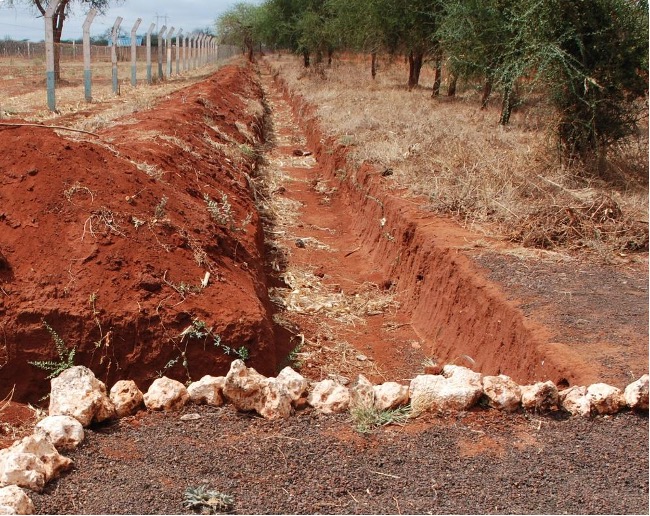As farmers and gardeners everywhere know, animals like to eat crops. In the Eastern US, it’s deer. In many tropical regions, it’s elephants. In parts of Japan, monkeys. And high-profile research plots are far from immune–the last time we visited, the International Rice Research Institute, whose breeding contributed to 60% of rice grown worldwide, was using plastic sheet fencing to keep out rats and empty tin cans hanging from strings to repel birds.
Yet the lion’s share, so to speak, of research on crop protection goes to work on pests and diseases, not animals. Protection from animals is the kind of overlooked research area that interests us at Grow Further.
Defending wildlife while protecting farmers
The International Union for Conservation of Nature (IUCN) confirms in a new report that most human-wildlife conflicts arise over peoples’ desire to protect crops or livestock. Examples IUCN cites include “situations such as crop raiding by elephants leading to poisoning of elephants by farmers, or livestock predation by lions causing local persecution of lions, or mass culling of birds or bats to prevent damage to orchards.” These are all “fairly clear cases of human-wildlife conflict,” IUCN says. Elephants are particularly problematic, wrecking smallholder farms in India, Indonesia, and across parts of Africa.
Managing human-wildlife conflict is a fraught topic as years of scholarly studies attempt—often in vain—to understand the dynamics that pit farmers against animals. The aim is to keep both safe and create a space for coexistence. Preventing human-animal conflicts is such a deep and complex issue that the IUCN’s latest report on this topic is 243 pages long. IUCN assures readers that keeping animals and humans (and their crops) apart is anything but straightforward.
The report was issued by IUCN’s Species Survival Commission and is billed as a set of guidelines wildlife managers and even agricultural development experts can use to find creative ways to prevent clashes between people and wild animals. One aim, IUCN says, is to prevent these incidents from escalating to human-to-human conflicts. For instance, when animals damage or devour crops “retaliation against the species blamed often ensues, leading to conflict between groups of people about what to be done to resolve the situation.” Smallholder farmers can be completely devastated when animals rampage their fields, only to feel betrayed when wildlife managers stop them from retaliating against the thieves.

The elephant (not) in the field
To help avoid these no-win situations, IUCN says creative solutions must be found by all stakeholders involved. They cite a case in Indonesia where groups passionate about conserving elephants convinced farmers to join forces to keep pachyderms out of their fields located near Way Kambas National Park. There, community members were encouraged to volunteer as guards working in shifts, patrolling and protecting all farmers’ fields equally and almost around the clock. These “self-reliance groups” were trained as crop guards and positioned where elephants were most likely to attack. At one point, some of the villages used in these trials were thwarting 90 percent of elephant incursions.
“Situations such as crop raiding by elephants leading to poisoning of elephants by farmers, or livestock predation by lions causing local persecution of lions.”
Other projects aimed at protecting crops from elephants opt for a low-tech solution: trenches.
These cheap but labor-intensive trench barriers can be found in some savanna areas but they’re rare in forested environments. A study now out in the journal PLOS ONE focused on anti-elephant trenches dug between forests and farmlands in Uganda to determine their effectiveness.
The researchers behind the Uganda investigation found that elephants were more likely to invade fields close to the forest’s edges. Where they existed, anti-elephant trenches tended to protect crops, but not always. The team discovered that elephants would find ways to get around the deep trenches where their favorite foods were growing. They suggest planting a buffer zone of crops less desired by the elephants. Ultimately, the study finds that more research is needed; nevertheless, the trench concept, when done properly, just might work. “Trenches alone will not prevent conflict but this strategy holds promise for hot spots of conflict at forest edges.”
Digging trenches and standing guard at night are a lot of work. At Grow Further, we hope to support more innovative solutions that help farmers coexist with nature.
— Grow Further
Photo credits: A security ditch meant to protect a test maize field in Kenya from elephant incursions (Ann Wangalachi/CIMMYT, CC BY-NC-SA 2.0). An African bull elephant (US Fish and Wildlife Service, public domain).




